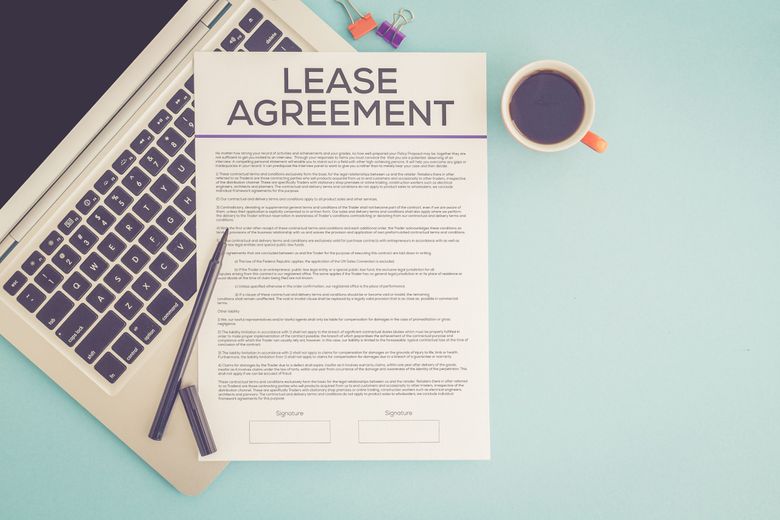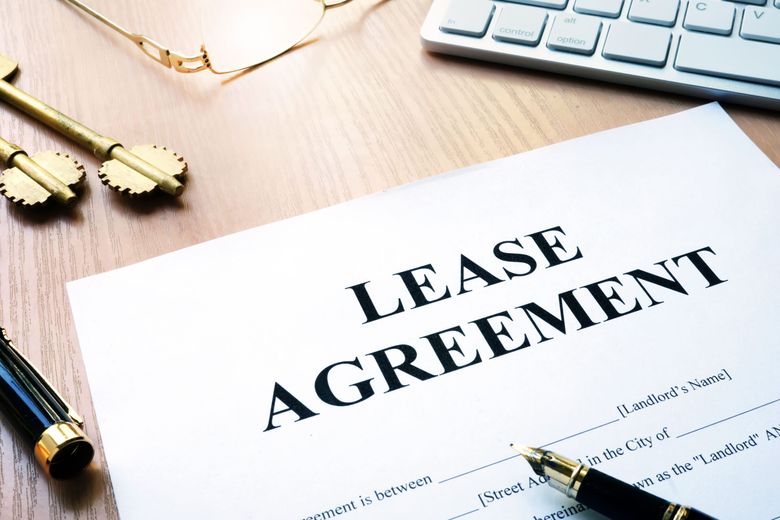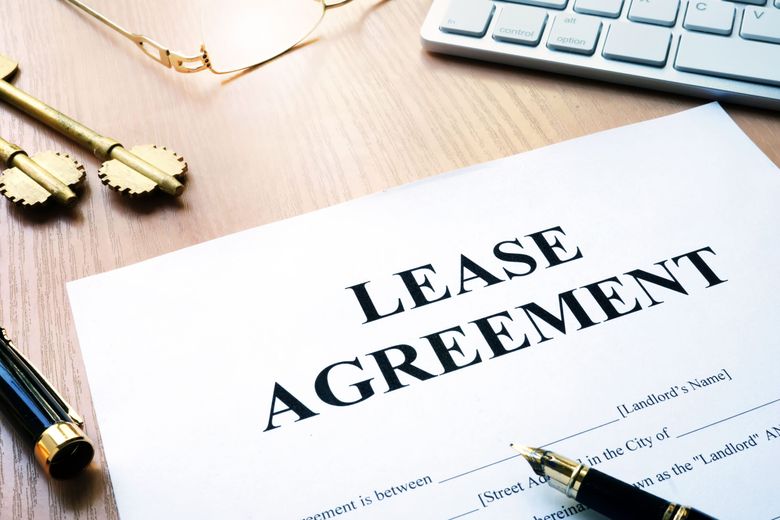Imagine this scenario: You’re comfortably settled in your rental home, but the end of your lease is fast approaching. The idea of packing up and moving feels overwhelming, but there’s a light at the end of the tunnel – lease extensions. A lease extension agreement is a lifeline that can save you from the hassle of moving, not to mention the cost.
As a landlord, the end of a tenant’s lease can be a double-edged sword. On one hand, it presents the opportunity to reevaluate rental rates in a potentially booming market or make necessary property improvements without the constraints of a current lease. On the other hand, it means losing a reliable and established tenant, which can be a time-consuming and costly process.
We’ve meticulously prepared this blog, considering every possible question or concern that may arise. Through numerous discussions with both tenants and landlords, we’ve compiled crucial insights to guide you when creating a lease extension agreement.
So, are you ready to learn how to craft one in 2023? Strap in, because we’re about to take a deep dive into the process of drafting lease extensions!
Key Takeaways
- Lease extensions can be a fantastic solution for maintaining your business continuity and providing stability, adaptability, cost-effectiveness, and legal safeguards.
- Successfully negotiating the terms of a lease extension agreement requires a good understanding of the law and maintaining open communication!
- Utilize templates to get all necessary signatures while steering clear of common pitfalls for a smooth, stress-free success.
Suggested Posts:
- How To Write A Move-Out Letter To The Tenant (3 Samples Inside)
- Exploring The Best Time To Lease An Apartment
- Exploring The Benefits Of Mid-Rise Apartments
What is a lease extension agreement?
A lease extension agreement is a legal document that offers tenants the opportunity to extend their stay in a property beyond the original lease term. This provides stability and flexibility for all parties involved. So, if you’re a tenant craving some extra time in that cozy abode or a landlord keen on maintaining occupancy, a lease extension could be your golden ticket.
An easy-to-use lease extension agreement builder will enable you to create your personal new lease agreement swiftly, whether it’s an extension or a rental agreement. Understanding all terms and conditions, as well as keeping abreast of local tenant laws, is crucial to preventing unexpected complications.
How do lease extensions work?
Here are some key points to understand about lease extension agreements:
- Extension of Lease Term: The primary purpose of a lease extension agreement is to extend the term of the original lease. The new lease term could be for a specific number of years, months, or even on a month-to-month basis, depending on the terms negotiated by the parties involved.
- Terms and Conditions: The lease extension agreement should outline all the terms and conditions that will apply during the extended lease period. This includes details such as rent amount, payment schedule, maintenance responsibilities, and any changes to the original lease terms.
- Rent Negotiation: In many cases, when extending a lease, the landlord and tenant may negotiate changes to the rent. This could involve increasing or decreasing the rent amount, depending on market conditions and the needs of both parties.
- Renewal Process: Some lease extension agreements may include an option for the tenant to request an extension when the lease is near expiration. This is known as a lease renewal option, and it specifies the process and timeline for requesting an extension.
- Legal Requirements: Depending on local laws and regulations, there may be specific legal requirements for lease extension agreements. For example, some jurisdictions may require certain notices to be given or specific forms to be used.
- Record Keeping: It’s important to keep a written record of the lease extension agreement. Both parties should sign the agreement, and each should retain a copy for their records. This can help prevent disputes and misunderstandings in the future.
- Tenant Rights: Lease extension agreements can provide security and stability for tenants, as they allow tenants to continue living or operating a business in the same location without the uncertainty of finding a new space. Tenants may also have the right to negotiate favorable terms during the extension process.
- Landlord Considerations: Landlords should carefully consider the financial and legal implications of extending a lease. They may also want to evaluate market conditions and the tenant’s rental history before agreeing to an extension.
When do you need a lease extension agreement?
Lease extension agreements become particularly useful when tenants wish to stay, landlords aim to maintain occupancy, or both parties seek to avoid the inconvenience of searching for new tenants or properties.
Things to keep in mind:
- When a lease expires, it can transform into a “holdover” tenancy, where the tenant can stay as long as they keep paying rent and the landlord is okay with it.
- However, a lease extension agreement provides a more formal and legally binding arrangement, ensuring peace of mind for both parties.
- They offer a win-win solution, allowing tenants to continue enjoying their rental property without the stress of moving, while landlords can avoid the time-consuming and often costly process of finding new tenants.
- Moreover, with the advent of digital tools and resources, landlords now have the option to use free online lease extension agreements.
- These digital documents are easy to use and can be customized to fit specific situations, providing a quick, efficient, and cost-effective solution to extending a lease.
What are the essential elements of a lease extension agreement?
The specific elements of a lease extension agreement may vary based on local laws and individual circumstances, but here are some essential elements typically included:
1. Parties Involved: Identify the parties involved, including the landlord (lessor) and the tenant (lessee). Provide their legal names and addresses.
2. Property Description: Clearly describe the property that is subject to the lease extension, including the address and any unique identifiers like a unit number.
3. Original Lease Information: Reference the original lease agreement, including the date it was signed, the lease term, and any relevant provisions from the original lease.
4. Extension Terms: Specify the new lease term, including the start date and end date of the extended period. It’s essential to be precise about the length of the extension.
5. Rent and Payment Terms: Clearly state the revised rent amount for the extended term, as well as the payment frequency (e.g., monthly, quarterly). If there are any changes in payment methods or due dates, include them in this section.
6. Security Deposit: Address whether the security deposit remains the same, is adjusted, or is refunded and replaced with a new one for the extension period.
7. Maintenance and Repairs: Outline the responsibilities of both parties regarding property maintenance and repairs during the extension period. Specify which party is responsible for specific repairs or maintenance tasks.
8. Utilities and Services: Clarify who is responsible for paying for utilities and services (e.g., water, electricity, internet) during the extended lease period.
9. Notices: Define how notices between the parties will be delivered, including the method of communication (e.g., written notice, email) and the addresses to which notices should be sent.
10. Termination: Outline the conditions under which either party can terminate the lease extension agreement before its scheduled end date. Specify the notice period required for termination.
11. Renewal Options: If applicable, include provisions for further lease extensions or renewal options beyond the extended term.
12. Governing Law: Specify the jurisdiction and laws that will govern the lease extension agreement in case of disputes.
13. Signatures: Provide space for the signatures of both the landlord and the tenant, along with the date of signing. Each party should retain a signed copy of the agreement for their records.
14. Witness Signatures: Depending on local legal requirements, you may need to include witness signatures to validate the agreement.
15. Legal Review: It’s advisable for both parties to have the agreement reviewed by legal counsel to ensure its compliance with local laws and that their interests are protected.
What are the benefits of a lease extension agreement?
Lease extension agreements offer a plethora of perks, including:
- Stability for tenants: Lease extension agreements provide a sense of security and continuity for tenants. Instead of having to uproot their lives and search for a new place to live, tenants can enjoy the comfort and familiarity of their current home for a longer period. This stability can be particularly beneficial for families with children, who may not want to disrupt their children’s schooling or social lives by moving. Additionally, for those who have established a sense of community in their neighborhood, a lease extension allows them to maintain these vital connections.
- Flexibility for both parties: Lease extension agreements offer a high degree of flexibility for both the tenant and the landlord. For tenants, they provide the opportunity to extend their stay without the need to commit to a long-term lease. This can be particularly beneficial if the tenant is uncertain about their future plans or if they need some extra time to find a new place. For landlords, lease extensions provide the flexibility to keep a reliable tenant for a longer period, reducing the risk of vacancy and the effort associated with finding a new tenant. Moreover, lease extensions allow for the renegotiation of terms, such as rent or maintenance responsibilities, which can be adjusted to better suit the needs and circumstances of both parties.
- Cost-savings: Lease extensions can also result in significant cost savings for both tenants and landlords. For tenants, the cost of moving, which can include hiring movers, buying packing supplies, and potentially paying for a new security deposit and first month’s rent, can be quite high. By extending their lease, tenants can avoid these costs. For landlords, filling a vacancy can also be costly. They may need to advertise the property, screen new tenants, and potentially even renovate or repair the property before a new tenant can move in. By extending a lease with a current tenant, they can avoid these costs and ensure a steady stream of rental income.
- Reduced vacancy risks: Lease extension agreements significantly diminish the risk of vacancies for landlords. When a lease ends, and a tenant moves out, it can take some time to find a new, reliable tenant. During this period, the property remains unoccupied, leading to potential loss of income. However, by extending the lease with the current tenant, landlords can ensure that their property remains occupied, thus maintaining a steady stream of rental income. This not only provides financial stability for landlords but also saves them the time and effort required to find and vet new tenants.
- Relationship-building opportunities: Lease extensions provide a great platform for strengthening the relationship between landlords and tenants. They create an environment of open dialogue and negotiation, which can lead to a better understanding of each other’s needs and expectations. Furthermore, a successful lease extension can foster a sense of trust and reliability between the two parties, which can be beneficial for future interactions. This relationship-building aspect of lease extensions can contribute significantly to a more harmonious and cooperative landlord-tenant relationship.
- Time efficiency: Lease extension agreements are a boon when it comes to saving time. For tenants, they eliminate the need to search for a new home, go through the application process, and move all their belongings. This can be a particularly significant time-saver for those with busy schedules or those who find the process of moving to be stressful. For landlords, lease extensions mean they can avoid the time-consuming process of advertising the property, screening potential tenants, and preparing the property for new occupants. In essence, a lease extension agreement allows both parties to bypass these time-consuming tasks and continue with their current arrangements, thereby saving valuable time.
- Legal protection: Lease extension agreements serve as a legal safety net for both tenants and landlords. For tenants, they provide a legally binding guarantee of continued occupancy, protecting them from sudden eviction. For landlords, these agreements ensure that their property remains occupied and income-generating for a specified period. Moreover, such agreements safeguard the interests of both parties by setting clear terms and conditions, thereby reducing the risk of potential disputes and misunderstandings. In essence, lease extension agreements offer a robust framework of legal protection that contributes to a stable and harmonious landlord-tenant relationship.
How does lease extension agreement differ from a lease renewal agreement?
While both lease extension and lease renewal agreements share the common goal of prolonging the rental contract between a tenant and landlord, they differ in the extent to which other conditions of the agreement can be renegotiated. Let’s define each.
- Lease extension agreement: This agreement extends the original lease term without creating a new lease. It preserves the terms and conditions of the initial contract, with potential modifications, such as changes to the rent amount. Think of it as an add-on to the existing lease, safeguarding the legal standing and continuity of the original lease.
- Lease renewal agreement: On the other hand, a lease renewal agreement forms an entirely new contract between the landlord and tenant once the original lease term expires. This new lease may contain updated terms and conditions, replacing the original lease in its entirety. Therefore, a lease renewal agreement may involve renegotiation of various elements, such as rent, security deposit, or maintenance responsibilities, leading to a more extensive revision of the rental agreement.
Choosing between a lease extension and a lease renewal ultimately depends on your individual needs and circumstances. Factors such as the tenant’s financial stability, property market conditions, and local laws may influence which option is more suitable.
How to draft a lease extension agreement?
Here are the necessary steps to create a lease extension agreement that is legally binding:
- Review the Current Lease Agreement: The first step in creating a lease extension agreement is to carefully review the important terms of the current lease. Understanding terms such as the duration of the lease, rent amount, maintenance responsibilities, and other relevant terms sets the foundation for the extension agreement and helps identify areas that may need to be revised or updated.
- Communicate with the Tenant: Start a dialogue with the tenant before the lease expires. Ask them if they are interested in extending the lease and address any concerns or questions they might have. Open communication is crucial for a smooth lease extension process.
- Research Market Conditions: Look into the current rental market conditions in your area. This will help determine whether a rent increase is justified or if the current rent amount should be maintained. Consider factors like market demand, property value, inflation, and any improvements made to the property since the original lease agreement.
- Negotiate Terms and Conditions: This could involve discussions about the rent amount, duration of the lease, extension options, maintenance responsibilities, and other relevant clauses.
- Draft the Extension Agreement: Once negotiations are complete, it’s time to draft the lease extension agreement. Include the names and contact information of both parties, the address of the property, the term of the extension, and the rent amount. Also, incorporate any changes or updates agreed upon during the negotiation process.
- Include Necessary Clauses: To protect the interests of both parties, consider including specific clauses in the extension agreement. These could include clauses about maintenance responsibilities, penalties for late payments, subletting, pet policies, and conditions for termination. These clauses should be clear, concise, and in accordance with applicable laws.
- Share the Draft: The next step is to share the draft extension agreement with the tenant for their review. Encourage them to read and understand all the terms and conditions thoroughly. Address any questions or concerns they may have before finalizing the agreement. Once both parties are satisfied with the terms, sign the lease extension agreement to make it legally binding.
- Keep Copies: After signing, make copies of the lease extension agreement for both the landlord and tenant. Keep the original document in a safe and easily accessible place. This ensures both parties have a record of the extended lease and its terms.
How do local laws and regulations affect the terms and conditions of lease extension agreements?
Local laws and regulations significantly influence lease extension agreements by setting guidelines for rent increases, notice periods, and tenant rights. To ensure your lease extension agreement is both legally compliant and enforceable, it’s vital to familiarize yourself with local landlord-tenant laws and regulations. Adhering to these rules helps avoid potential disputes and complications further down the line.
While rental laws differ from one jurisdiction to another, they typically aim to safeguard the interests of both landlords and tenants. Here are a few instances of how local laws can influence lease extension agreements:
- Rent control and stabilization: Laws pertaining to rent control or stabilization may restrict how much a landlord can raise the rent during a lease extension.
- Notice requirements: Local laws may stipulate the notice period a tenant must give to request a lease extension or the time frame within which a landlord must notify the tenant of their decision to accept or decline the extension request.
- Termination rights: Local regulations may detail specific scenarios under which a lease extension agreement can be prematurely terminated by a landlord or tenant, such as contract breach, property damage, or other violations of the lease terms.
What are some special considerations for lease extension agreements?
Lease extensions play a crucial role in the relationship between a landlord and a tenant as they mitigate the potential risks for both parties.
Things to keep in mind:
- For instance, when a landlord agrees to extend the lease, they can maintain the original lease terms, including any provisions about notices to vacate. This means the tenant has to provide prior written notice before leaving the property.
- Thus, the landlord can feel secure, knowing there won’t be any unexpected vacancies, and they won’t have to risk having an empty property.
- Similarly, a lease extension can offer tenants a sense of stability. With a proper extension in place, tenants won’t have to vacate their units after the lease expires.
- Though not mandatory, lease extensions are a great way to reduce the risks for both the landlord and the tenant.
- Businesses enter into lease agreements and agree to lease extensions for a variety of reasons. The main reason for leasing an asset instead of purchasing it is risk management.
- For example, a business may decide to lease a piece of land to protect itself from the risk of fluctuating land prices. This allows the business to focus on its core operations rather than real estate.
- Another reason for leasing is to simplify disposal. For instance, a construction company may decide to lease a piece of heavy machinery, rather than buy it, so that it does not have to deal with selling the equipment after it is no longer needed. The lessee may pay more per hour to use the equipment, but this can be worthwhile if it saves time and the cost of selling the equipment later.
What types of leases typically get extended?
The lease types most frequently extended include:
- Residential leases, such as month-to-month, short-term, and fixed-term or long-term leases, are frequently extended to provide flexibility and stability for tenants.
- Commercial leases
- Car leases
Commercial leases, especially long-term ones, tend to be extended to accommodate the needs of businesses. Car leases can be extended as well, providing flexibility for drivers who may not be ready to commit to a new vehicle or lease agreement.
What is a month-to-month lease extension agreement?
A month-to-month lease extension agreement provides flexibility, allowing tenants to stay on a monthly basis and landlords to adjust rent prices as necessary.
Things to keep in mind:
- For tenants, this arrangement provides the freedom to move or change their living arrangements without being tied to a long-term commitment.
- For landlords, month-to-month lease extensions allow them to increase rent prices for tenants who need to stay put while transitioning between leases or properties.
- However, this flexibility comes with the risk of the tenant being asked to leave if the landlord finds someone willing to commit to a longer-term lease.
What are some tips for negotiating lease extensions?
Negotiating a lease extension can be a beneficial way to secure your current living or business space for a longer period, potentially at a better rate. Here are some tips to help you negotiate a lease extension successfully:
1. Start early: Begin the negotiation process well in advance of your lease’s expiration date. This gives you more time to explore your options and increases your negotiating leverage.
2. Research market rates: Understand the current market rates for similar properties in your area. This information will help you gauge whether your current lease terms are competitive and provide you with data to support your negotiation.
3. Evaluate your needs: Consider whether your space requirements have changed since you signed the original lease. Do you need more or less space? Make sure the lease extension aligns with your current and future needs.
4. Maintain a positive relationship: Building a good rapport with your landlord or property manager can be crucial. Communicate openly and professionally throughout the negotiation process to foster a cooperative atmosphere.
5. Know your lease terms: Familiarize yourself with the terms and conditions of your existing lease, including any renewal or extension clauses. Understanding these details will help you negotiate effectively.
6. Identify leverage points: Determine any factors that may work in your favor during negotiations. For example, if you’ve been a reliable and long-term tenant, this can be a strong point in your favor.
7. Offer concessions: Be prepared to give something in return for the lease extension. It could be agreeing to a longer lease term, agreeing to take care of certain maintenance or repairs, or being flexible with rental increases.
8. Consider hiring a real estate agent or attorney: If you’re unfamiliar with lease negotiations or feel overwhelmed, consider enlisting the help of a real estate agent or attorney who specializes in lease negotiations. They can provide valuable guidance and representation.
9. Document everything: Keep records of all communication, including emails, letters, and notes from in-person meetings. This documentation can be valuable if any disputes arise during negotiations.
10. Be patient and persistent: Negotiating a lease extension can take time and may involve multiple rounds of discussions. Be patient and persistent in your pursuit of favorable terms.
11. Review the proposed lease extension carefully: Once you’ve reached an agreement in principle, carefully review the new lease terms to ensure they align with your expectations and any concessions you’ve made.
12. Seek legal advice if needed: If you have concerns about the lease extension terms or believe there are potential issues, consult with a real estate attorney before signing any documents.
Why should you use lease extension templates?
You can find lease extension form templates and lease agreement template options on legal websites or get them from a lawyer. These templates help ensure consistency, clarity, and proper documentation when drafting the agreement. After acquiring a suitable template, fill in the required tenant, landlord, and property information as needed.
Using a lease extension template not only saves time and effort, but also helps ensure that all essential elements are included in the agreement. A well-structured template can provide a solid foundation for drafting a legally binding lease extension agreement that satisfies both the landlord and tenant.
LEASE EXTENSION TEMPLATE
What are some common mistakes to avoid in lease extension agreements?
To ensure a smooth and fair lease extension process, it’s essential to avoid common mistakes that could lead to disputes or financial issues down the road. Here are some common mistakes to avoid:
1. Not Seeking Legal Advice: Lease extension agreements can be legally complex, and failing to seek legal advice from a qualified attorney can lead to unfavorable terms or legal complications.
2. Inadequate Research: Failing to research comparable rental rates in the area can result in agreeing to an extension at an above-market rate, costing you more in the long run.
3. Unclear Terms and Language: Use clear and unambiguous language in the agreement to prevent misunderstandings or disputes. Ensure that all terms, such as the duration of the extension and rent amount, are clearly specified.
4. Neglecting Maintenance and Repairs: Clarify who is responsible for maintenance and repairs during the extended lease term to avoid disputes over property upkeep.
5. Ignoring Rent Escalation: Lease extension agreements should address whether there will be rent increases during the extended term and specify how those increases will be determined.
6. Not Considering Future Needs: Consider your long-term needs for the property. If you foresee changes or expansion of your business, make sure the lease extension accommodates these plans.
7. Skipping Inspections: Conduct a thorough property inspection before finalizing the agreement to identify any existing issues or needed repairs. Document these in the agreement.
8. Ignoring Termination Provisions: Include provisions for how the lease extension can be terminated or renegotiated in the future, especially if the property owner has plans for the property.
9. Neglecting Financial Provisions: Clearly outline payment terms, security deposits, and any penalties or late fees in case of non-payment. Be sure to address any changes in utilities or other financial responsibilities.
10. Not Considering Tax Implications: Consult a tax advisor to understand any tax implications of the lease extension for both parties.
11. Lack of Notice Period: Specify the notice period required for either party to terminate or renegotiate the extended lease, typically several months in advance.
12. Forgetting to Document Changes: If any changes or concessions are made during negotiations, make sure they are properly documented in writing and incorporated into the final lease extension agreement.
13. Not Consulting with Stakeholders: If you are a tenant, involve your business partners or advisors in the negotiation process to ensure the terms of the extension align with your business goals.
14. Rushing the Process: Take your time to negotiate and review the lease extension agreement thoroughly. Rushing through the process can lead to oversights and unfavorable terms.
15. Failing to Address Contingencies: Consider potential contingencies, such as the sale of the property, and how they will affect the lease extension. Include provisions to protect your interests in such scenarios.
Let’s Wrap Up
Lease extension agreements offer a powerful solution for tenants seeking stability and landlords looking to maintain occupancy in their properties. By understanding the key elements, benefits, and potential pitfalls, you can successfully navigate the lease extension process and create a mutually satisfying agreement. Remember, knowledge is power – and with the information provided in this blog post, you’re well-equipped to extend your lease like a pro.
Sources
- https://www.jotform.com/pdf-templates/lease-extension-agreement
- https://ipropertymanagement.com/templates/lease-extension-addendum
- https://www.investopedia.com/terms/l/lease-extension.asp
- https://www.contractscounsel.com/t/us/lease-extension-agreement
- https://www.contractscounsel.com/t/us/lease-renewal-agreement
- https://www.sec.gov/Archives/edgar/data/872912/000119312510220397/dex101.htm
Frequently Asked Questions
How do I write a letter to extend my lease?
I am writing to extend my lease, which is set to expire on _. I am requesting an extension until _ and request no increase in rent during this period.
Included in my letter are my name, address, contact information, the date of the request, the length of the extension, reasons for the extension, and a proposed date by which I need a response.
What is a lease term extension clause?
Lease term extension clause is an option that tenants have to extend the existing lease agreement. It should specify the length of the new term, changes in rent, and other modifications.
This legal agreement grants the tenant the right to continue their occupancy for a predetermined period.
How do you extend a lease in Florida?
Extending a lease in Florida is simple; simply include the names of the parties, address of the property, start date and end date of the original lease, and a statement of agreement to extend the lease.
Let the tenanting begin!
What is the Montgomery County lease Renewal Amendment 1210?
Montgomery County Lease Renewal Amendment 1210 has undergone a few changes, namely the title being changed, the renewal notice period increased from 60 to 90 days, the rent increase section modified and one-year and two-year extension options added.
All in all, it’s a well thought-out set of revisions to the most common residential lease.
What does a lease extension do?
A lease extension is a legal agreement that allows existing tenants to extend the terms of their original lease and continue residing on the property. The contract sets out the dates, terms and conditions for the extension, allowing both parties to remain satisfied with the current terms of the lease agreement.
Extensions can be beneficial for both tenants and landlords. Tenants can enjoy the security of a longer lease, while landlords can benefit from a more reliable source of income. Additionally, extensions can help to reduce the costs associated with using them.


















